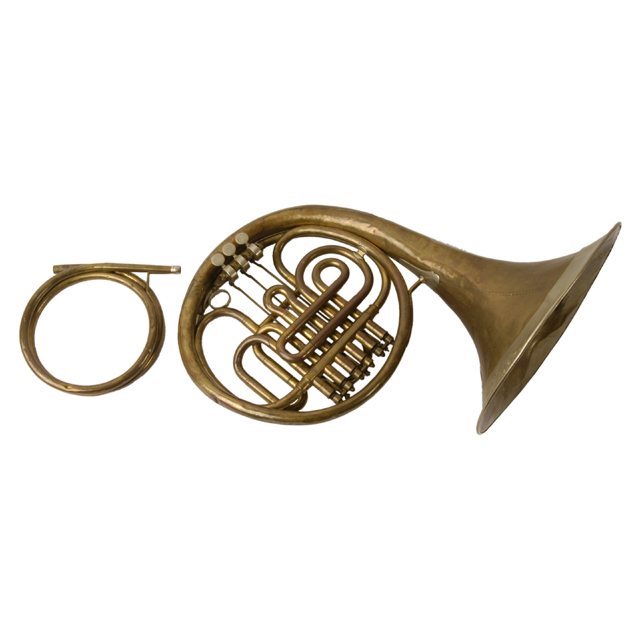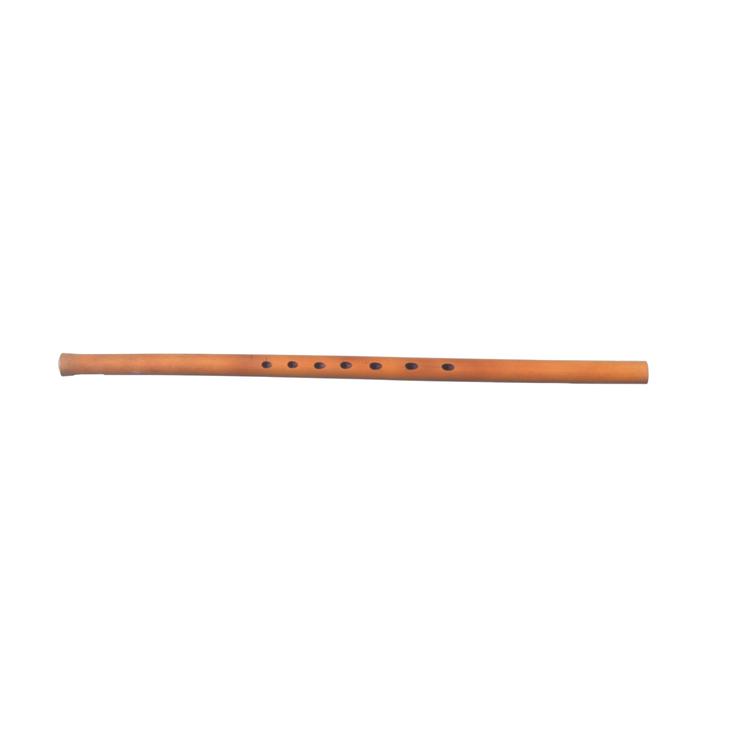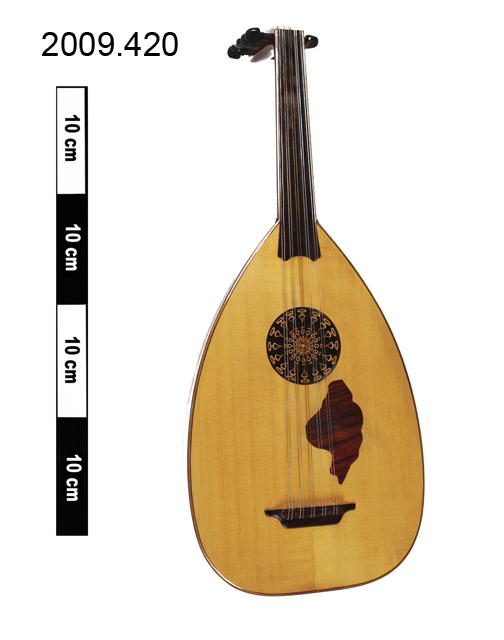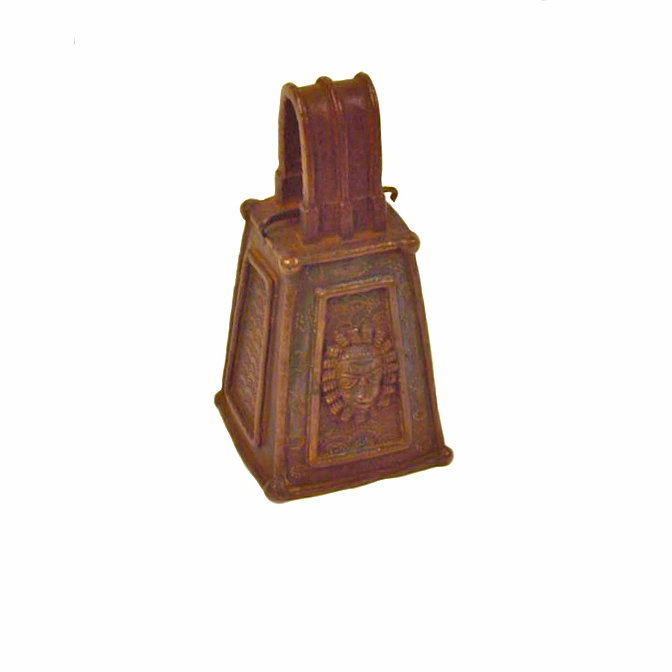
Horn, Vienna horn. Brass tubing. Three Vienna valves with clock-springs. One crook for F with nickel silver mouthpiece receiver. Mouthpiece missing. Nickel silver garland engraved with floral designs and stamped: Leopold Uhlmann/K.K.Hof/Instrumenten Fabrik in Wien.; Upper sections of valve casings are stamped: 1,2,3,4,5,6 respectively.
The Vienna valve, or double-piston valve, was one of the many brass instrument valve designs developed in the first part of the 19th century. It had the advantage over the earlier Stölzel valve that the bore diameter remained even throughout the valve passages, minimising the effect on the tone quality. Today, most orchestral horns use rotary valves, which were designed later and which allow a wider bore diameter, giving a rounder tone. Most orchestral horns are also built with a fixed mouthpipe. The most famous exception is the Vienna Philharmonic Orchestra, whose horn players still use Vienna valve instruments with detachable crooks.
































































































































































































































































































































































































































































































































